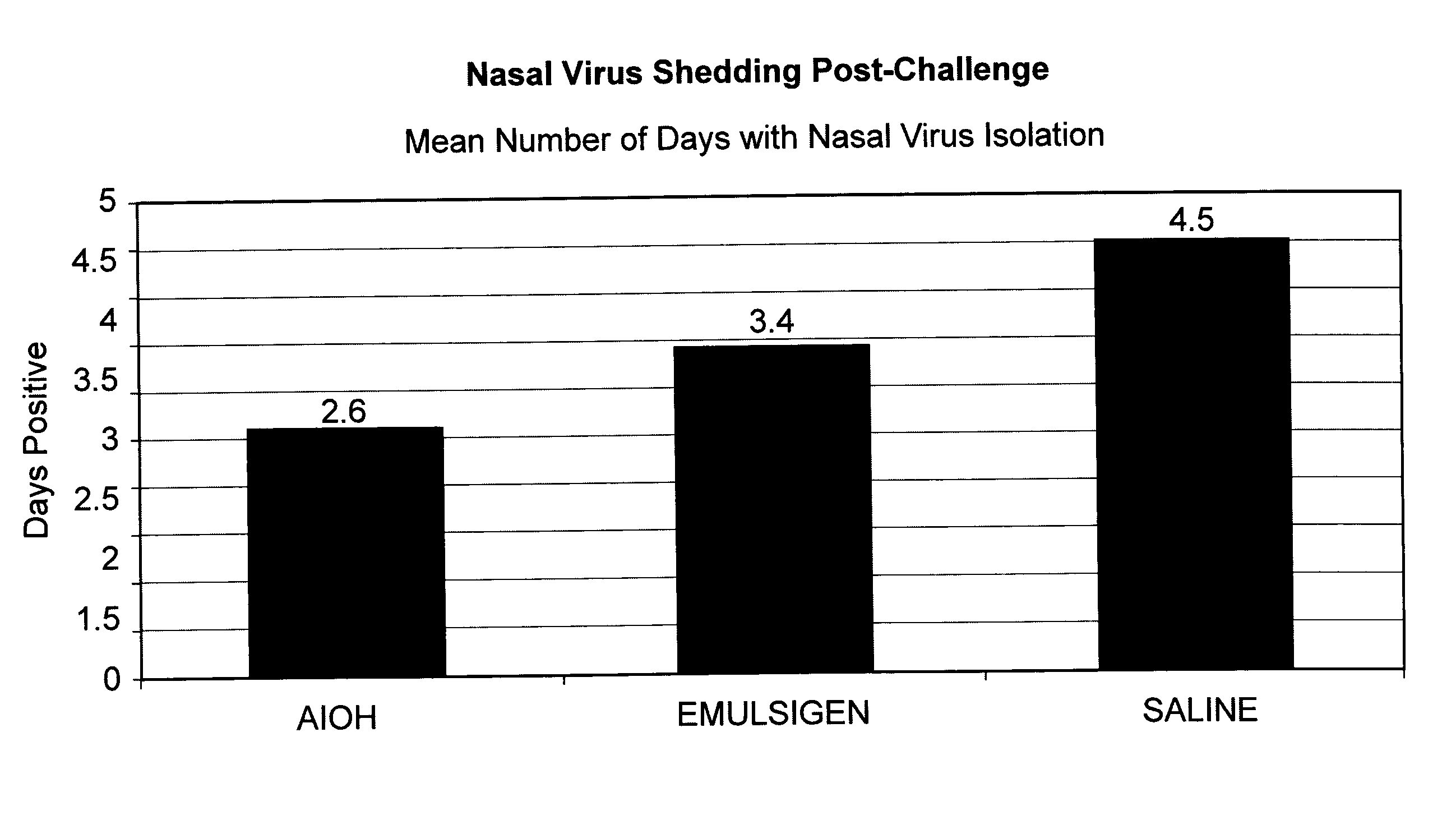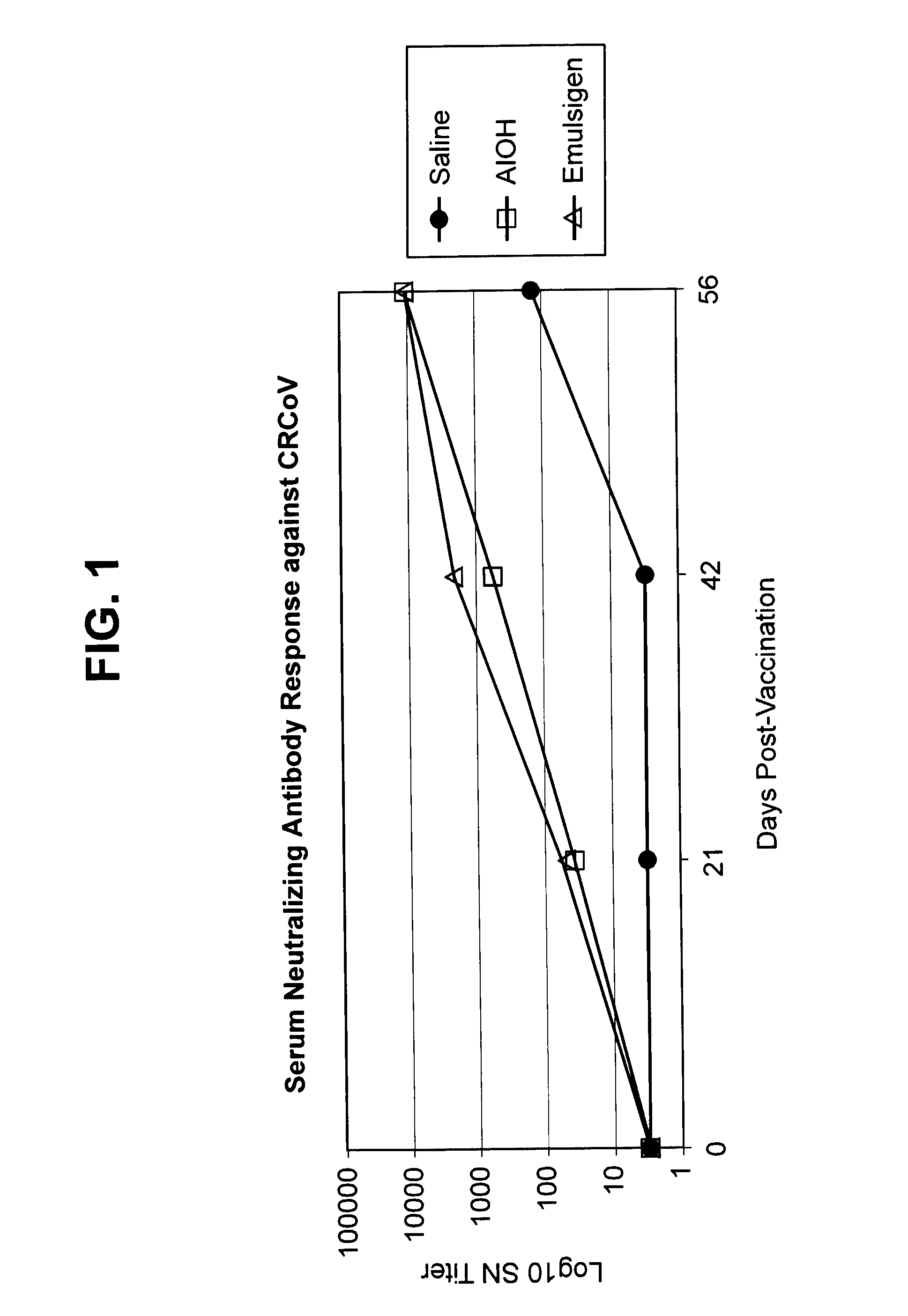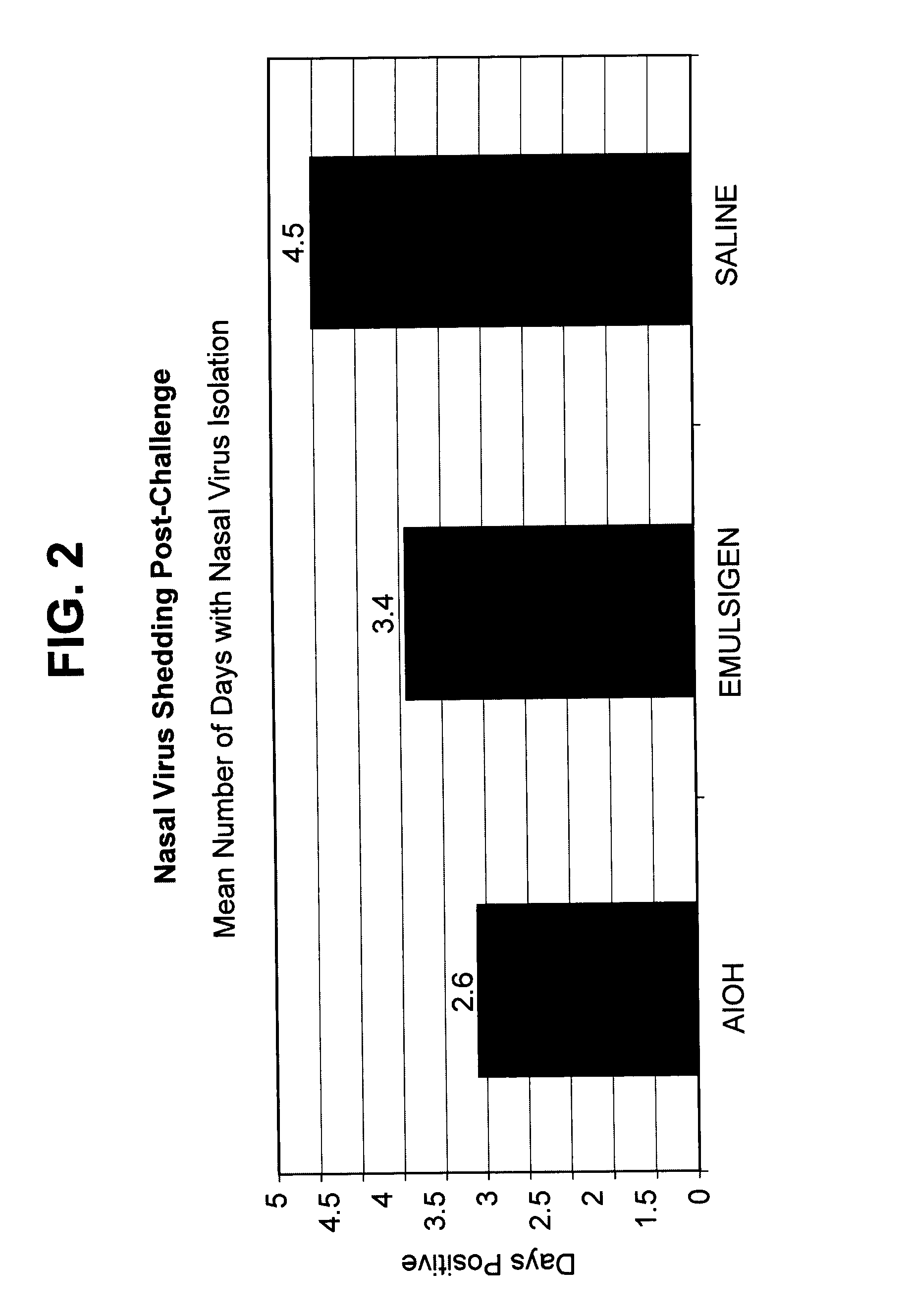Compositions for Canine Respiratory Disease Complex
a technology of respiratory disease and compositions, applied in the field of immunology, can solve the problems of severe bronchopneumonia, burning and irritation, deleterious side effects,
- Summary
- Abstract
- Description
- Claims
- Application Information
AI Technical Summary
Benefits of technology
Problems solved by technology
Method used
Image
Examples
example 1
Evaluation of CRCoV-Containing Vaccines
[0134]Sixty 8 to 9-week-old beagle dogs in good general health were used in the study. All animals received physical examination upon arrival and again on study day −2 or −1. Animals were observed once daily for general health status from arrival study day −8 to study day 39. Tympanic temperatures were collected starting on study day −1 prior to vaccination. Blood samples (approximately 5 mL) for serology were collected in SST tubes on study days 0 and 21 prior to each vaccination.
[0135]The CRCoV vaccine strain was derived from strain CRCoV.669, deposited with the ATCC as PTA-11444 in compliance with Budapest Treaty on the International Recognition of the Deposit of Microorganisms for the Purposes of Patent Procedure. The CIV vaccine strain was derived from that deposited with the ATCC as PTA-7694. The CPIV and CAV-2 isolates were derived from virus seeds used to formulate vaccines in the Vanguard® vaccine line (Pfizer). The antigens were prepa...
example 2
Efficacy Testing of a Bivalent CRCoV / CIV Vaccine in Dogs
[0155]Sixty 7- to 8-week old beagle dogs in good general health were used in the study. All animals received a physical examination upon arrival on study day −9. All animals, with the exception of one dog that was removed on study day −7, received a second physical examination on study day −2, and deemed suitable for the study. Animals were observed once daily for general health status from arrival study day −7 to study day 39. Blood samples (approximately 6 mL) for serology were collected in serum separation tubes (SST) on study days 0 and 21 prior to each vaccination. Two sets of nasal swabs—one for CRCoV and one for CIV virus isolation—were collected from each dog prior to vaccination on Day 0 to confirm freedom from CRCoV and CIV. Tympanic temperature was collected and documented on Days −1 and 0 prior to vaccination, to establish a baseline prior to vaccination. Tympanic temperatures were collected prior to second vaccinat...
example 3
Safety and Efficacy of Bordetella bronchiseptica-Containing Vaccines in Dogs
[0182]Fifty (50) dogs, divided into 5 treatment groups, were selected for the study. Animals were determined to be fit for the study based on a physical examination on Day −4,
[0183]Blood samples (approximately 8 mL) for serology were collected in SST tubes from all animals on Study Days −2, 21 and 28 prior to each vaccination. The serum samples collected on Day −2 were used to confirm animals were free of B. bronchiseptica. Nasal swabs were collected prior to vaccination on Day 0, and tested for the presence of B. bronchiseptica. Tympanic temperatures were collected starting on Day −4, to establish a baseline prior to vaccination.
[0184]Animals were vaccinated with the appropriate vaccine on Days 0, 21, and 28 according to the study design shown in Table 4. The vaccines were administered subcutaneously to each dog in the right shoulder region for the first vaccination, and in the left shoulder region for the ...
PUM
| Property | Measurement | Unit |
|---|---|---|
| time | aaaaa | aaaaa |
| time | aaaaa | aaaaa |
| time | aaaaa | aaaaa |
Abstract
Description
Claims
Application Information
 Login to View More
Login to View More - R&D
- Intellectual Property
- Life Sciences
- Materials
- Tech Scout
- Unparalleled Data Quality
- Higher Quality Content
- 60% Fewer Hallucinations
Browse by: Latest US Patents, China's latest patents, Technical Efficacy Thesaurus, Application Domain, Technology Topic, Popular Technical Reports.
© 2025 PatSnap. All rights reserved.Legal|Privacy policy|Modern Slavery Act Transparency Statement|Sitemap|About US| Contact US: help@patsnap.com



